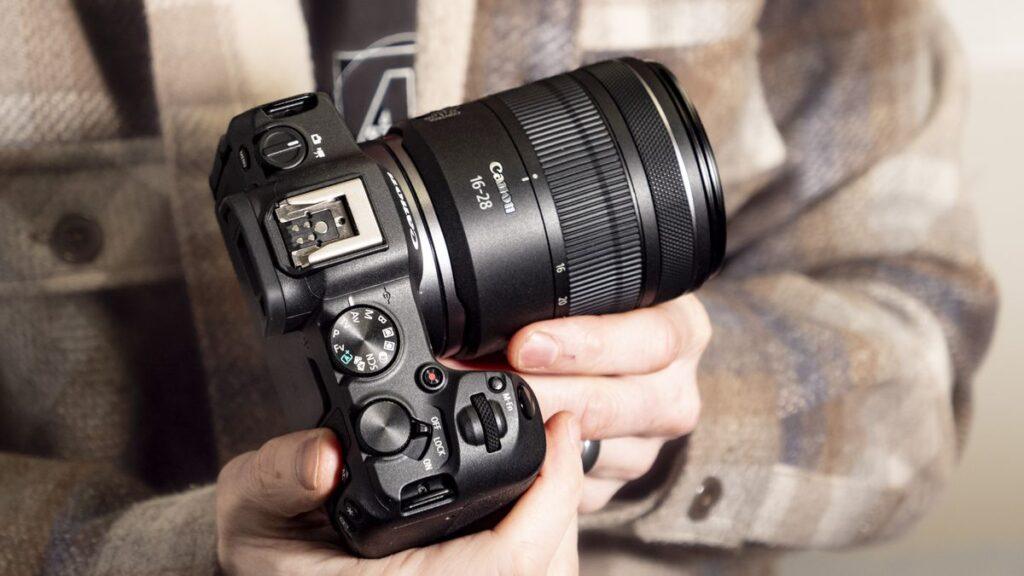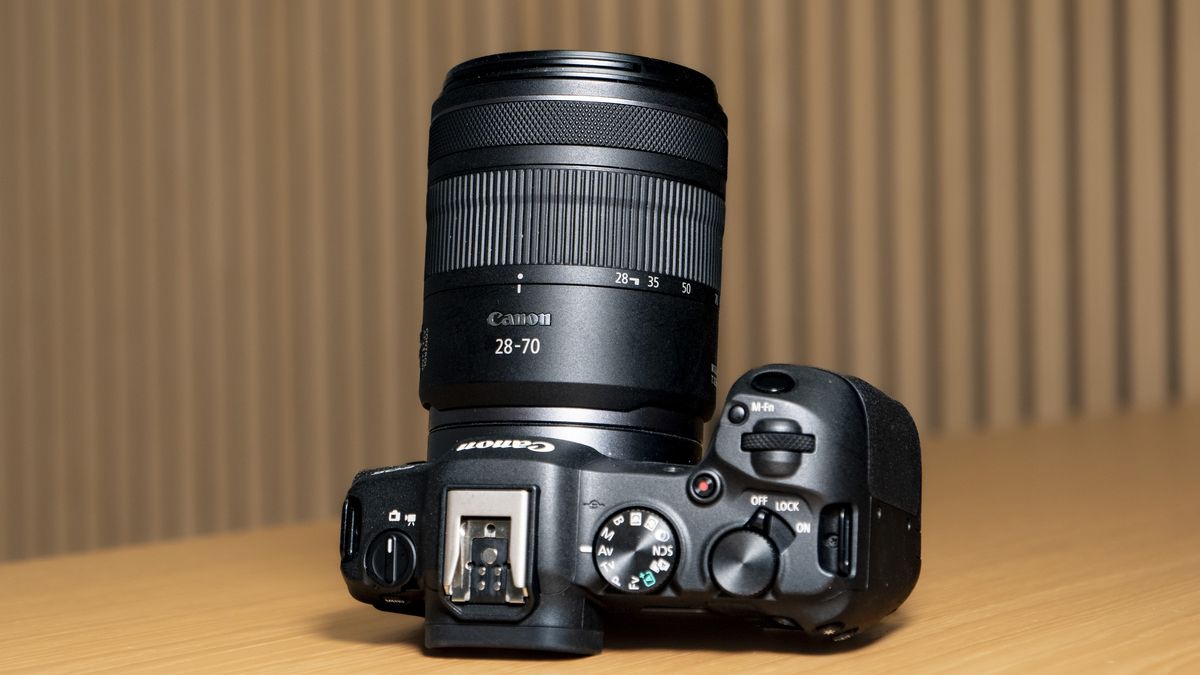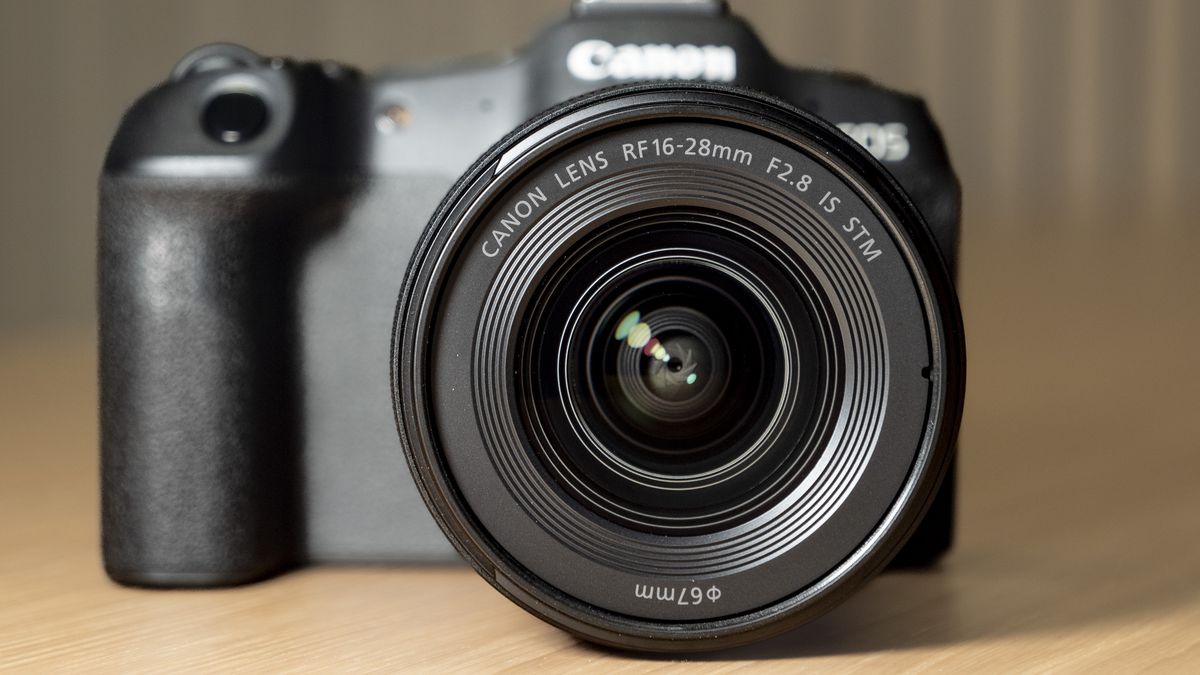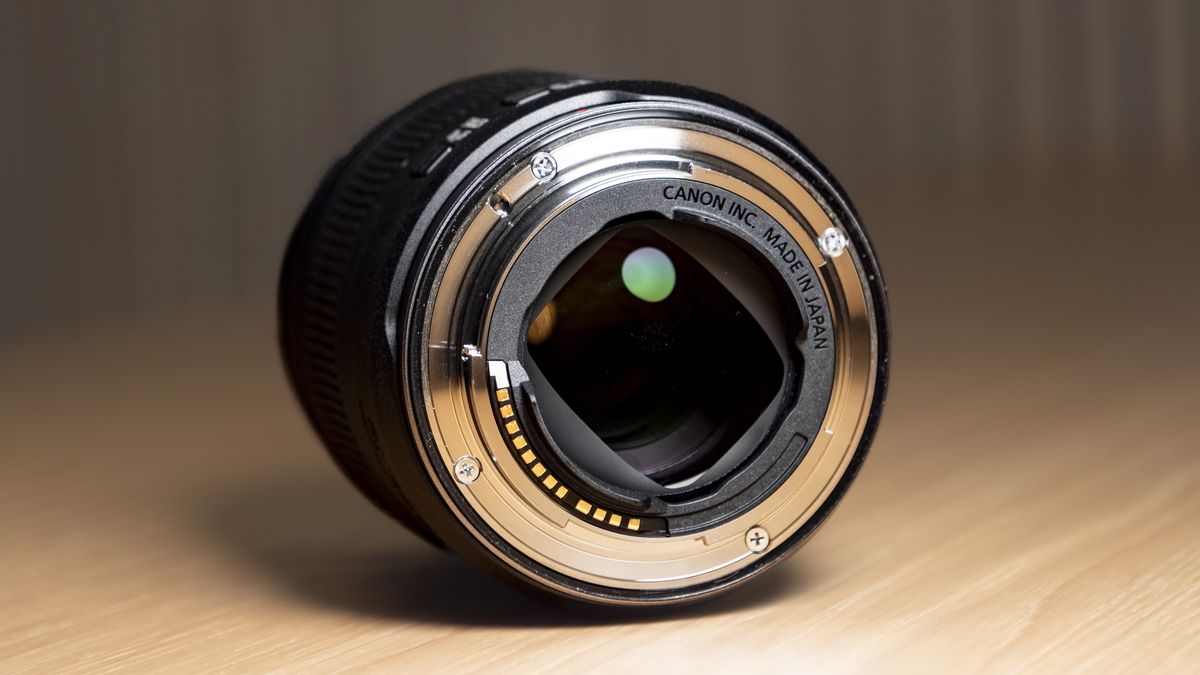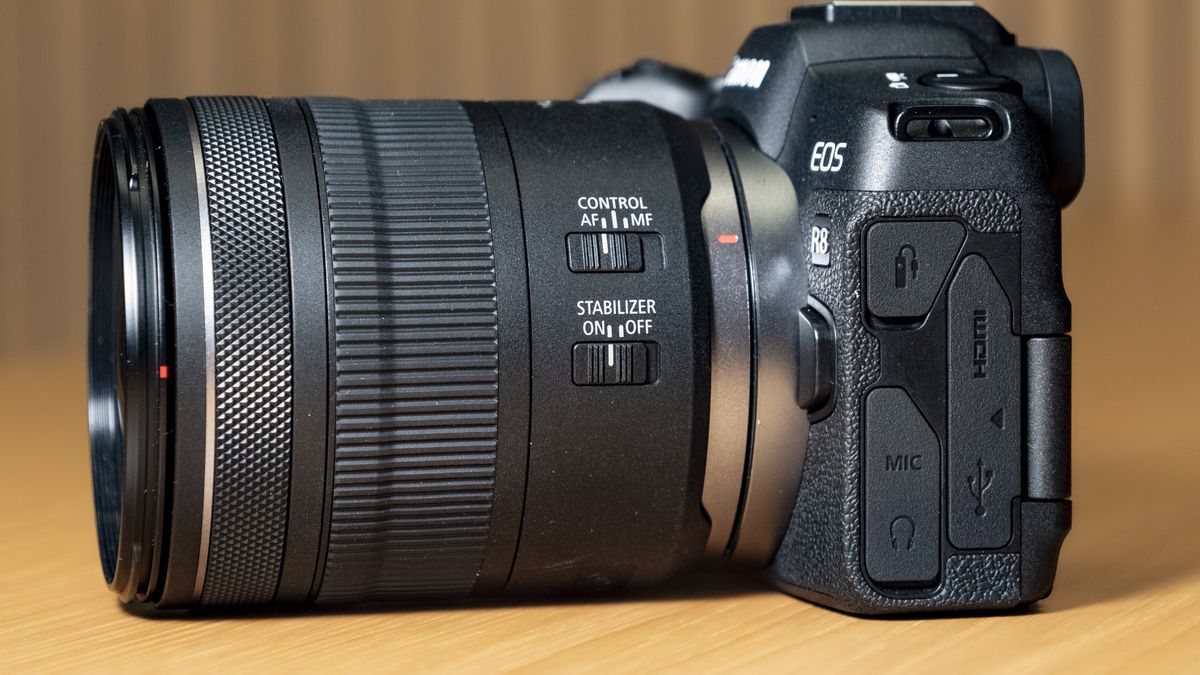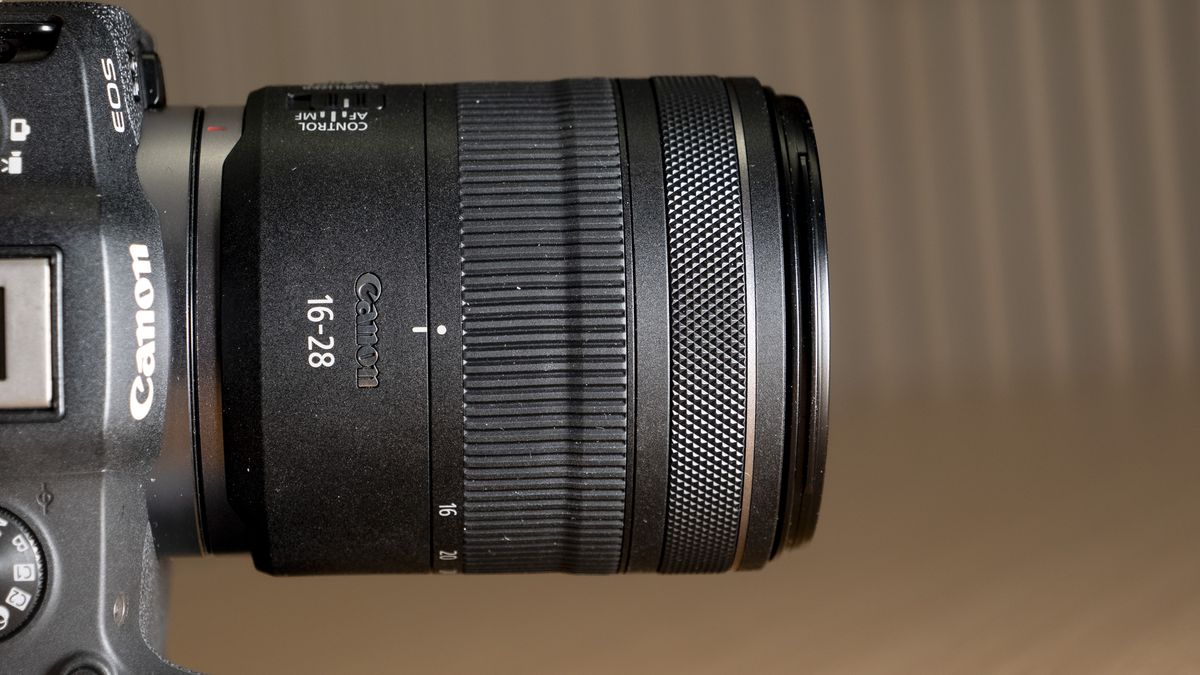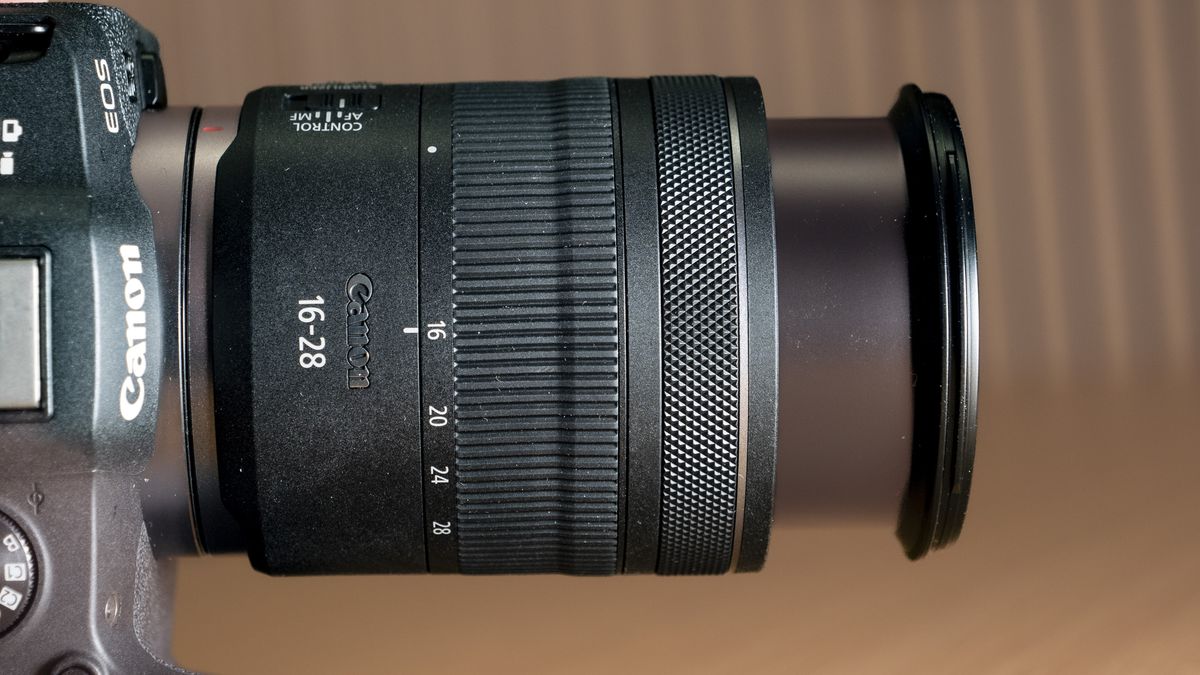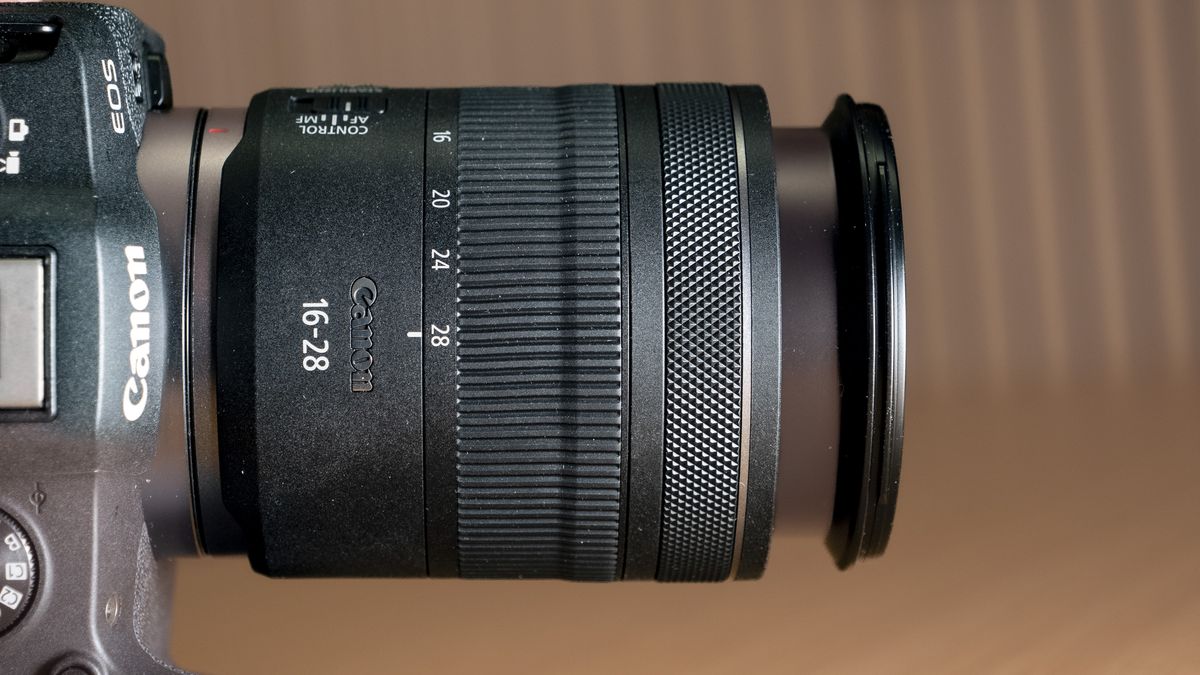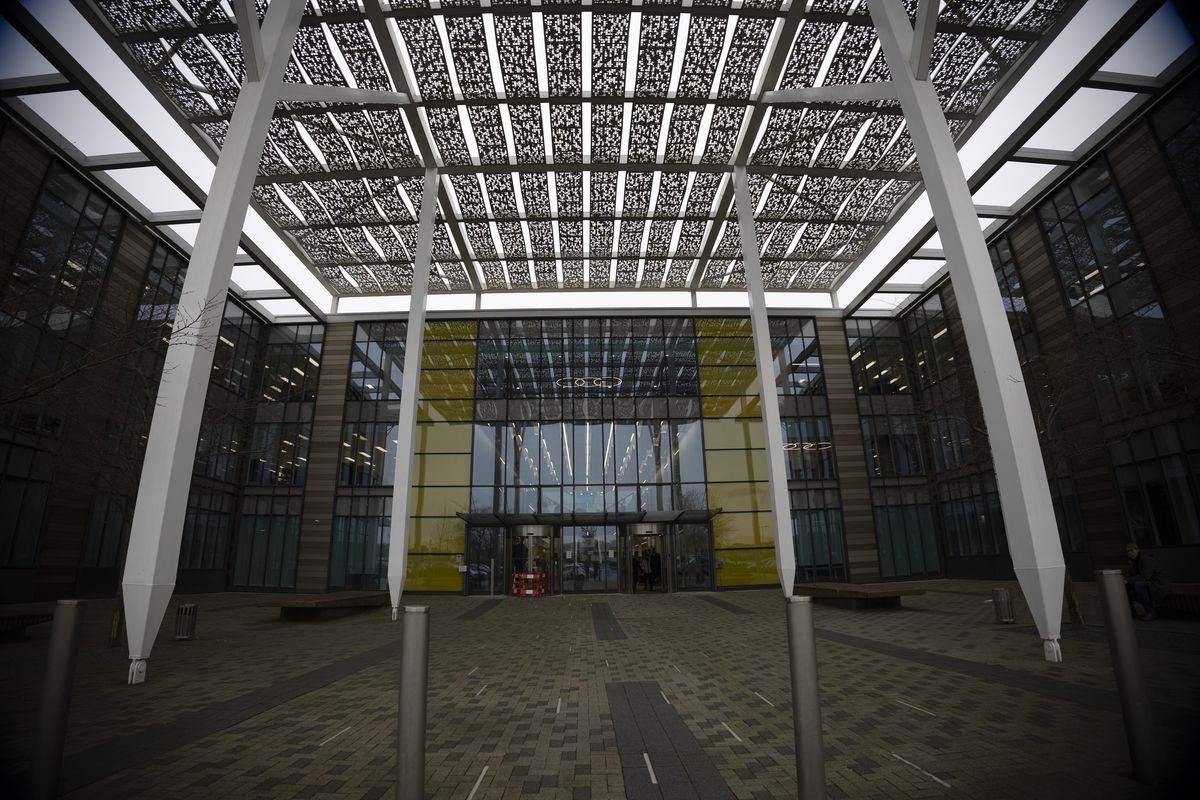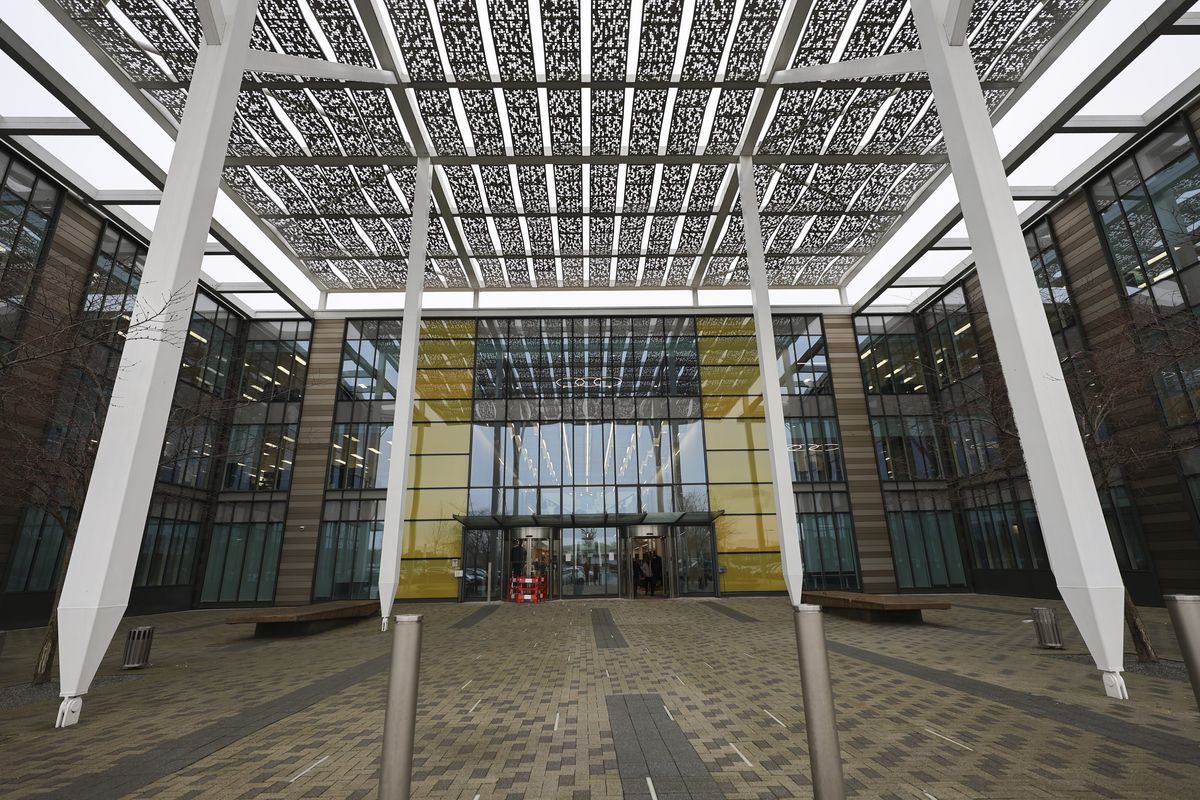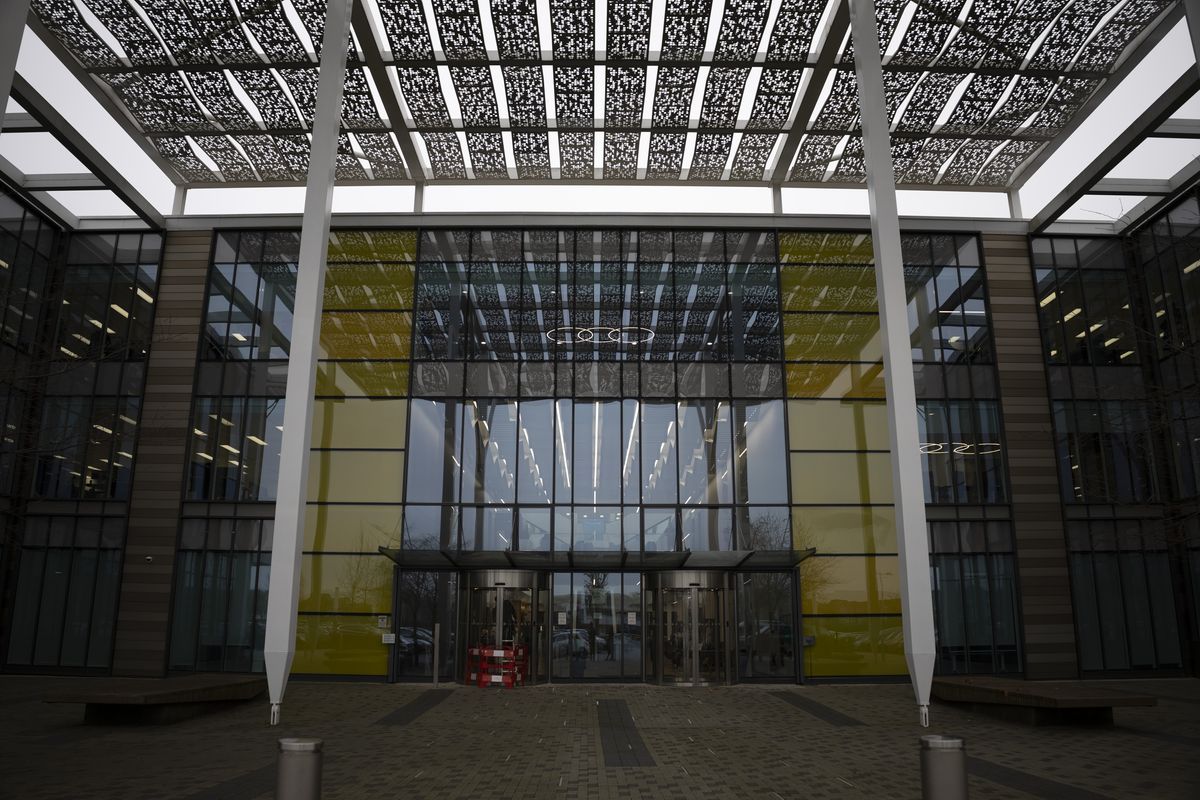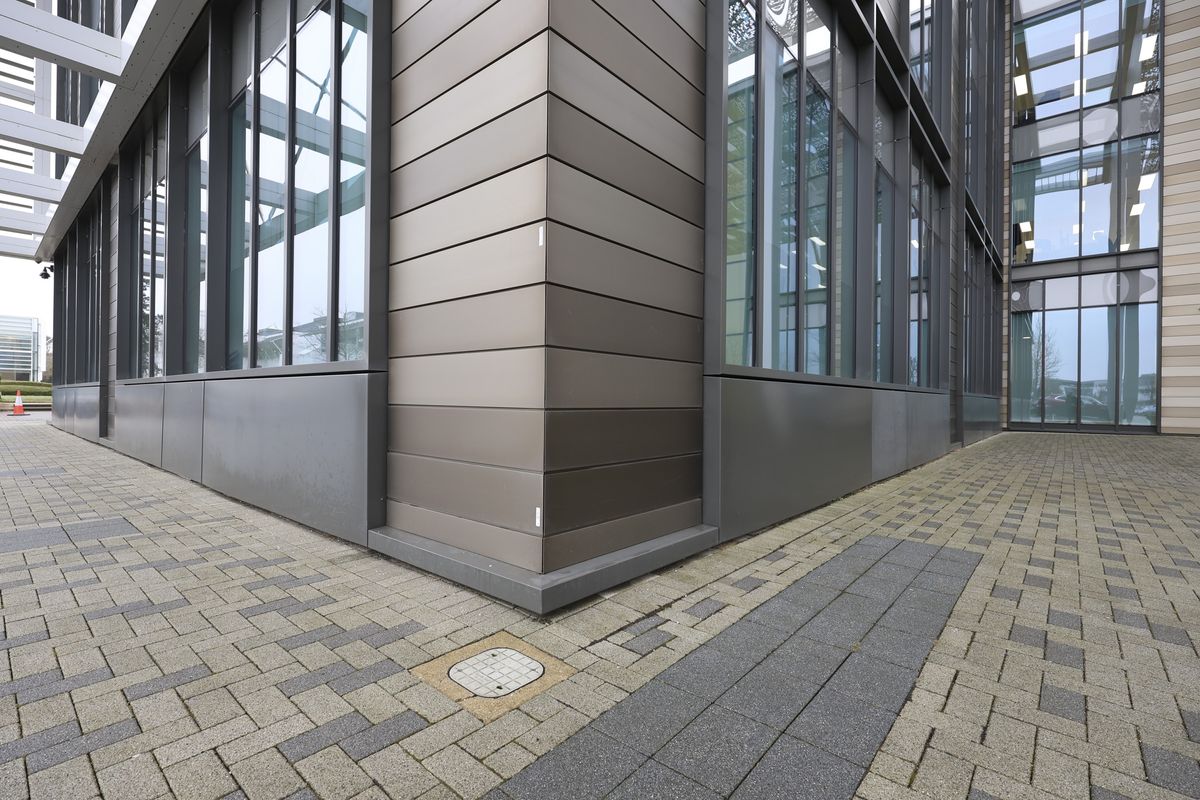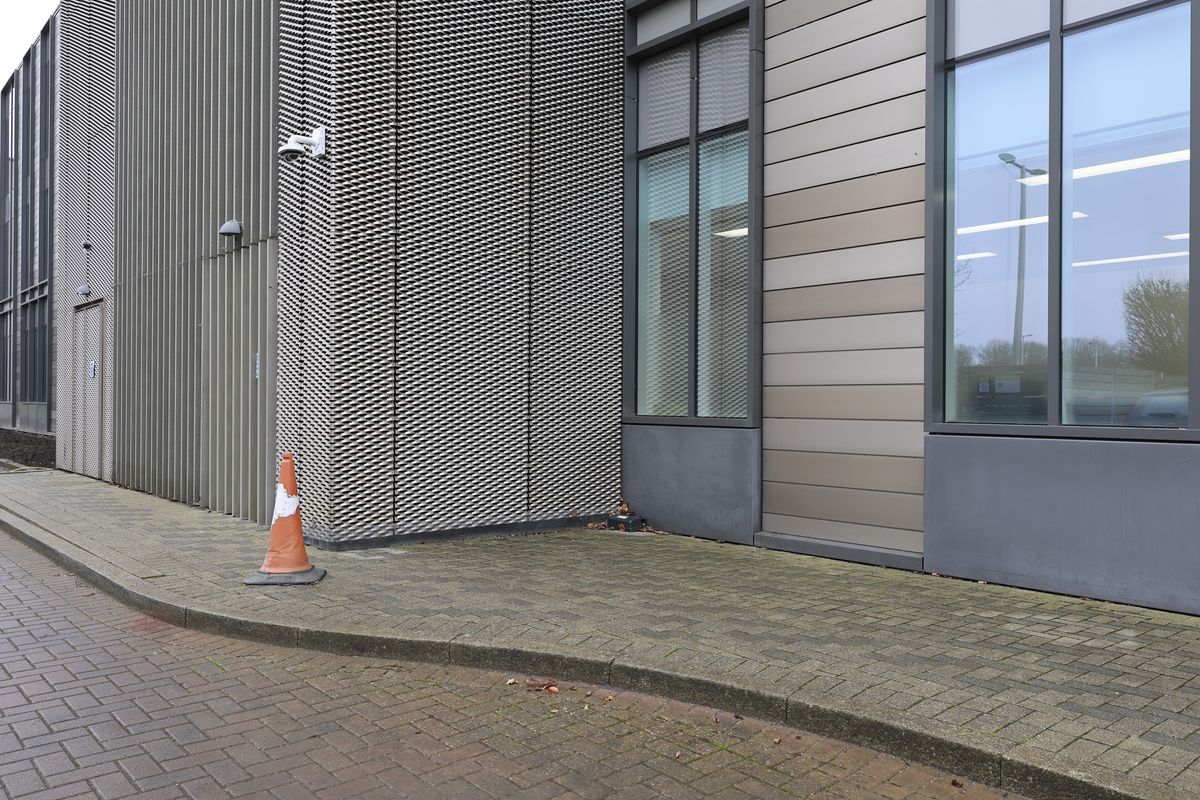- It is an ultra-wide zoom lens designed for full-frame cameras such as the Canon EOS R8
- Virtually identical design to the RF 28-70mm F2.8 IS STM
- A list price of £1,249 – we will confirm US and Australian prices as soon as possible
Canon has unveiled its latest ultra-wide-angle zoom lens for its mirrorless full-frame cameras, the RF 16-28mm F2.8 IS STM, and I got a proper feel for it during a hands-on session held by Canon ahead of its launch.
It has a bright F2.8 maximum aperture across its entire 16-28mm range and is a much more compact and affordable option for enthusiasts than Canon’s pro RF 15-35mm F2.8L IS USM lens. Consider the 16-28mm a sensible match for Canon’s entry-level and mid-range full-frame cameras instead, such as the EOS R8.
Design-wise, the 16-28mm is a perfect match with the RF 28-70mm F2.8 IS STM lens – the pair share the same control layout and are nearly identical in size, although the 28-70mm is around 10 percent heavier.
The new lens is apparently part of a move by Canon to provide more accessible fast aperture zooms that are better suited to Canon’s smaller mirrorless bodies – the 16-28mm weighs just 15.7oz / 445g and costs £1,249 – that’s a lot smaller than the comparable pro L series lens.
The right fit for enthusiasts
Despite its lower price, the 16-28mm still feels reassuringly solid – the robust lens is made in Japan and has a secure metal lens holder. You get an adjustable control ring, autofocus/manual focus switch plus an optical stabilizer switch, and that’s the extent of the external controls.
When paired with a Canon camera that has in-body image stabilization, such as the EOS R6 Mark II, you get up to 8 stops of stabilization, although the cheaper EOS R8 isn’t blessed with that feature and the lens offers 5.5 stops of stabilization alone.
I tested the 16-28mm lens with an EOS R8 and the pair is a perfect match, as is the EOS R6 Mark II, which is just a tad larger.
I didn’t get too many opportunities to shoot with the new lens during my brief hands-on, but I’ve taken enough sample shots taken in raw and JPEG format to get a good enough idea of the lens’ optical qualities and shortcomings.
At the extreme wide-angle setting of 16 mm and with the lens aperture fully open at F2.8, raw files show e.g. severe curvilinear distortion and vignetting. Look at the corresponding JPEG, which was shot at the same time, and you can see how much lens correction is applied to get you clean JPEGs out of the camera (check out the gallery of sample images below).
These lens distortions are really quite severe, but when you look at the JPEG output, all is forgiven – even with such heavy processing taking place to correct curvilinear distortion and vignetting, detail is consistently sharp from the center to the very edges and corners of the frame , while light fall in the corners is mostly treated.
I’m going to go out on a limb and suggest that the target audience for this lens will be less concerned about these lens distortions as long as it’s possible to get the end results you like, and my first impression is that you certainly can – I have took some sharp selfies and cityscapes, with decent control over depth of field, plus enjoyed the extra wide perspective that makes vlogging much easier.
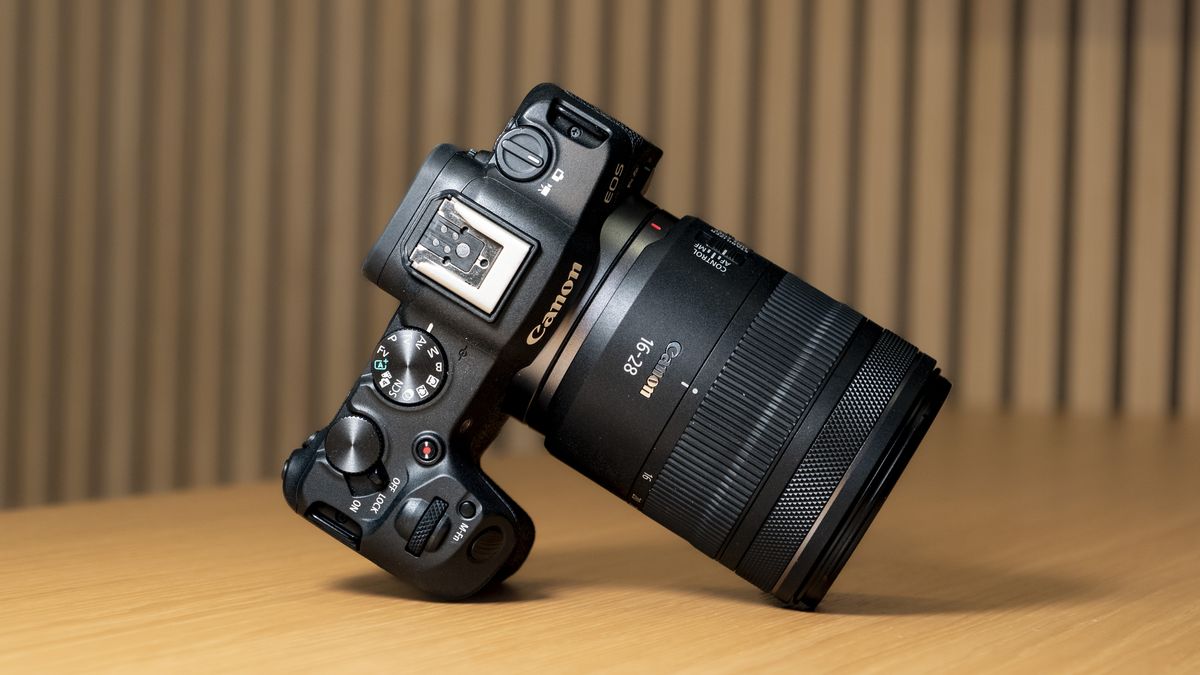
A worthy addition to the Canon RF mount family?
I expect that most photographers and filmmakers will mostly use the extreme ends of the 16-28mm lens’ zoom range; 16 mm and 28 mm. The former is especially handy for video work thanks to its ultra-wide perspective, while it’s a versatile choice for landscape and architecture photography.
That zoom range is hardly huge, though, and I’m not sure it’s a lens that particularly excites me, although it makes a sensible pairing with the RF 28-70mm F2.8 for enthusiasts.
It’s a lot cheaper than a comparable L-series lens, but I’d hardly call a £1,249 lens cheap. And why not just pick up the RF 16mm F2.8 STM and RF 28mm F2.8 prime lenses instead? They are Canon’s smallest lenses for full-frame cameras, and the pair together cost half the price of the 16-28mm F2.8.
As capable as the 16-28mm appears to be on my first impression – it’s a super sharp lens with versatile maximum aperture – I’m just not convinced how much extra it brings to the RF mounting table and whether there’s enough of a case for that for most.
